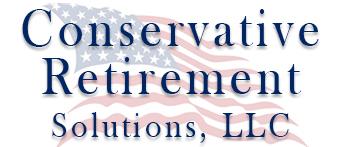Rick Dennis
Conservative Retirement Solutions, LLC
Forming a Strategic Retirement Withdrawal Plan
Retirement is a significant milestone, marking the transition from a lifetime of work to a period of relaxation and fulfillment. However, ensuring a comfortable and secure retirement requires meticulous planning, especially when managing withdrawals from your retirement savings. Developing a strategic retirement withdrawal plan is crucial to maintaining financial stability throughout your golden years. Here’s a comprehensive guide to help you craft an effective withdrawal strategy.
Understanding the Importance of a Withdrawal Plan
A well-structured withdrawal plan is essential to avoid running out of money in retirement. Without a plan, you risk depleting your savings too quickly, which may lead to financial stress and a diminished quality of life. On the other hand, a strategic approach helps you balance your withdrawals, ensuring you have sufficient funds for both your immediate and future needs.
Assess Your Retirement Income Sources
The first step in creating a withdrawal plan is to assess all your potential income sources. These may include:
- Social Security Benefits: Determine the optimal age to start receiving benefits to maximize your payouts.
- Pensions: Understand the terms and conditions of your pension plan and how it integrates with other income sources.
- Retirement Accounts: Evaluate the balances in your 401(k), IRA, and other retirement accounts.
- Investment Income: Consider your investments' dividends, interest, and rental income.
- Other Sources: Include any part-time work, annuities, or inheritance you might receive.
Prioritize Tax-Efficient Withdrawals
Tax efficiency is a critical aspect of a retirement withdrawal plan. Different types of accounts have varying tax implications. Here’s a general guideline:
- Taxable Accounts: Withdraw from these accounts first, as you have already paid taxes on the contributions.
- Tax-Deferred Accounts: Next, consider withdrawing from traditional IRAs and 401(k)s. These withdrawals are taxed as ordinary income.
- Tax-Free Accounts: Finally, use Roth IRAs and Roth 401(k)s. Withdrawals from these accounts are typically tax-free, provided you meet the necessary conditions.
Implement the 4% Rule with Caution
The 4% rule suggests that you withdraw 4% of your retirement savings annually, adjusted for inflation, to ensure your money lasts for 30 years. While this rule provides a valuable benchmark, it’s essential to tailor it to your circumstances. Factors such as market performance, your life expectancy, and unexpected expenses should influence your withdrawal rate.
Plan for Required Minimum Distributions (RMDs)
Once you reach age 72, the IRS requires you to take minimum distributions from your traditional IRAs and 401(k)s. Failure to do so may result in substantial penalties. Ensure your withdrawal plan accounts for these RMDs to avoid any tax complications.
Establish a Withdrawal Sequence
Establishing a withdrawal sequence may help you maximize your retirement income and minimize taxes. Here’s a suggested order:
- Cash and Savings Accounts: Use these for short-term needs and emergency expenses.
- Taxable Investments: Withdraw from these accounts to take advantage of lower long-term capital gains tax rates.
- Tax-Deferred Accounts: Begin withdrawing from these accounts to manage your tax liability.
- Tax-Free Accounts: Tap into Roth IRAs and Roth 401(k)s last to benefit from tax-free growth.
Adjust for Inflation and Market Changes
Your withdrawal plan should be flexible enough to adapt to inflation and market fluctuations. Regularly review your strategy and make adjustments as needed to ensure it remains aligned with your financial goals.
Seek Professional Guidance
Consulting with a financial advisor may provide valuable insights and personalized recommendations. An advisor may help you navigate complex tax laws, optimize your investment strategy, and ensure your withdrawal plan is sustainable.
Conclusion
Developing a strategic retirement withdrawal plan is a cornerstone of a secure and fulfilling retirement. By assessing your income sources, prioritizing tax-efficient withdrawals, and regularly adjusting your plan, you may enjoy financial peace of mind and make the most of your golden years. Take proactive steps to create a withdrawal strategy that aligns with your long-term financial goals and lifestyle aspirations.
Many people have learned about the power of using the Safe Money approach to reduce volatility. Our Safe Money Guide is in its 20th edition and is available for free.
It is an Instant Download. Here is a link to download our guide:

Rick Dennis
Conservative Retirement Solutions, LLC
1800 St. James Place
Suite 303
Houston, Texas 77056
rick.dennis@retirevillage.com
(713) 206-3885

Looking For Answers?
Download our Safe Money Guide and learn more about safe retirement options that can help you achieve your retirement goals safely - FREE!


